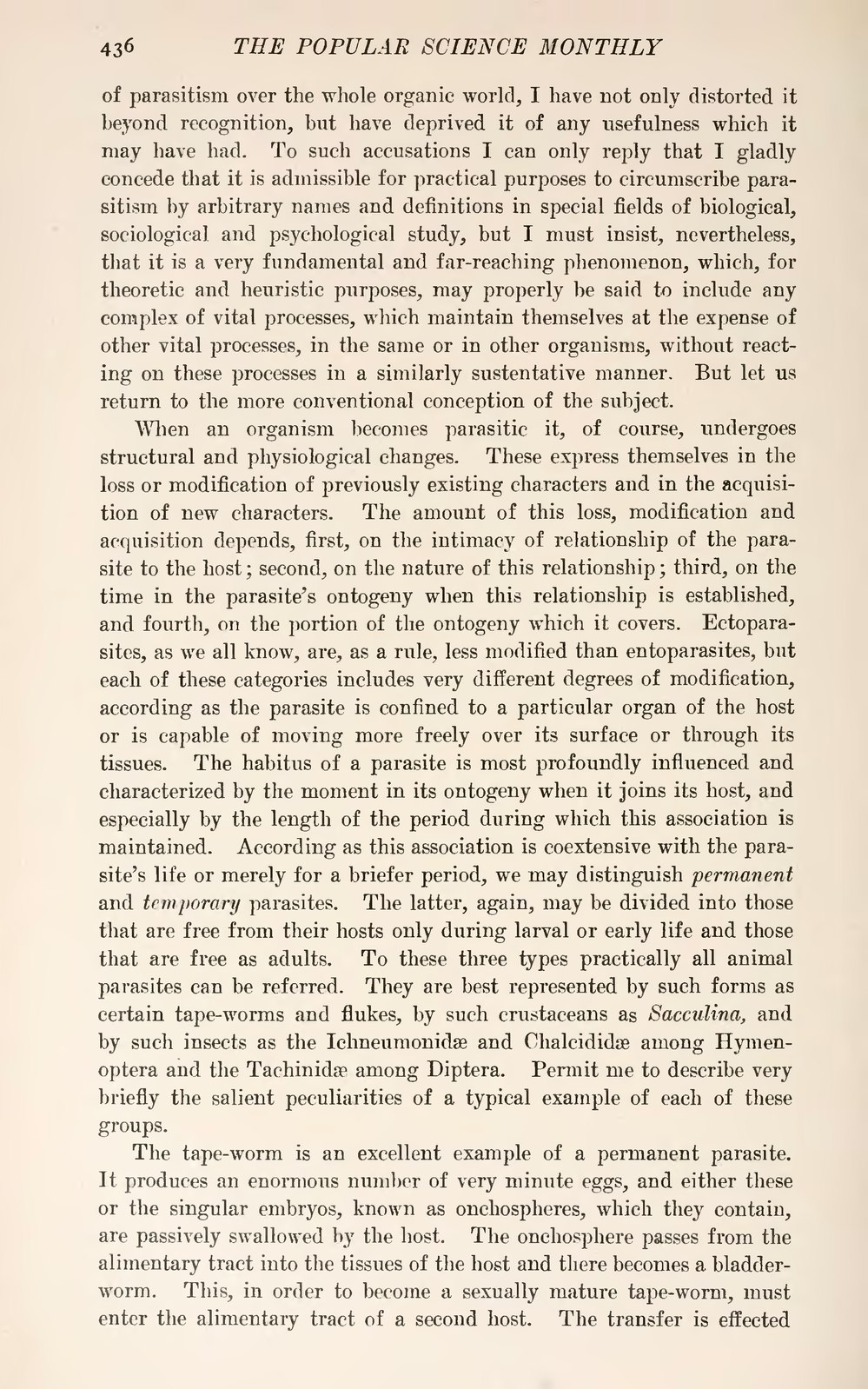of parasitism over the whole organic world, I have not only distorted it beyond recognition, but have deprived it of any usefulness which it may have had. To such accusations I can only reply that I gladly concede that it is admissible for practical purposes to circumscribe parasitism by arbitrary names and definitions in special fields of biological, sociological and psychological study, but I must insist, nevertheless, that it is a very fundamental and far-reaching phenomenon, which, for theoretic and heuristic purposes, may properly be said to include any complex of vital processes, which maintain themselves at the expense of other vital processes, in the same or in other organisms, without reacting on these processes in a similarly sustentative manner. But let us return to the more conventional conception of the subject.
When an organism becomes parasitic it, of course, undergoes structural and physiological changes. These express themselves in the loss or modification of previously existing characters and in the acquisition of new characters. The amount of this loss, modification and acquisition depends, first, on the intimacy of relationship of the parasite to the host; second, on the nature of this relationship; third, on the time in the parasite's ontogeny when this relationship is established, and fourth, on the portion of the ontogeny which it covers. Ectoparasites, as we all know, are, as a rule, less modified than entoparasites, but each of these categories includes very different degrees of modification, according as the parasite is confined to a particular organ of the host or is capable of moving more freely over its surface or through its tissues. The habitus of a parasite is most profoundly influenced and characterized by the moment in its ontogeny when it joins its host, and especially by the length of the period during which this association is maintained. According as this association is coextensive with the parasite's life or merely for a briefer period, we may distinguish permanent and temporary parasites. The latter, again, may be divided into those that are free from their hosts only during larval or early life and those that are free as adults. To these three types practically all animal parasites can be referred. They are best represented by such forms as certain tape-worms and flukes, by such crustaceans as Sacculina, and by such insects as the Ichneumonidæ and Chalcididæ among Hymenoptera and the Tachinidæ among Diptera. Permit me to describe very briefly the salient peculiarities of a typical example of each of these groups.
The tape-worm is an excellent example of a permanent parasite. It produces an enormous number of very minute eggs, and either these or the singular embryos, known as onchospheres, which they contain, are passively swallowed by the host. The onchosphere passes from the alimentary tract into the tissues of the host and there becomes a bladderworm. This, in order to become a sexually mature tape-worm, must enter the alimentary tract of a second host. The transfer is effected
